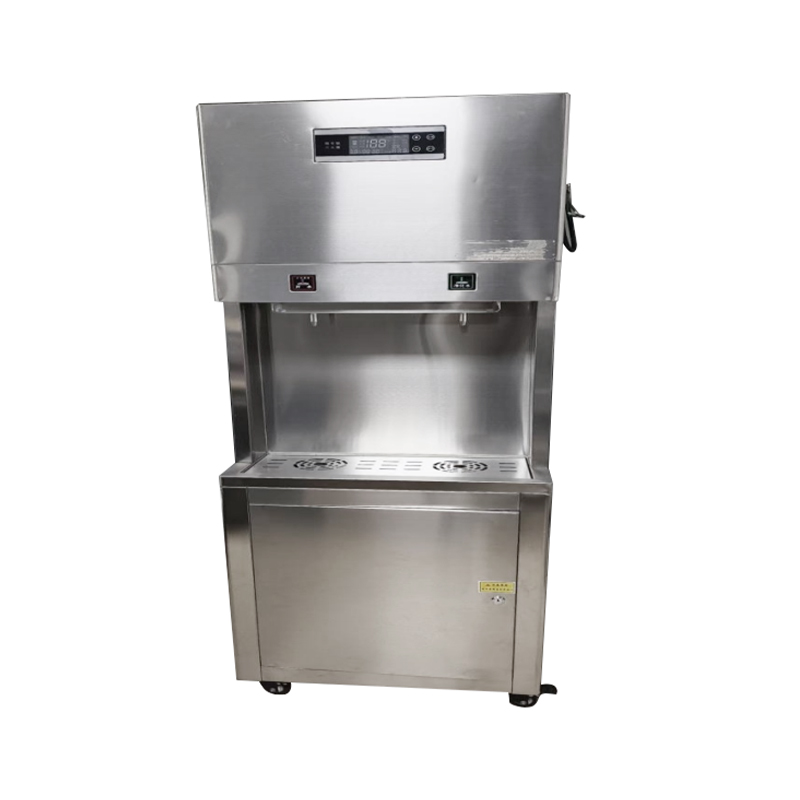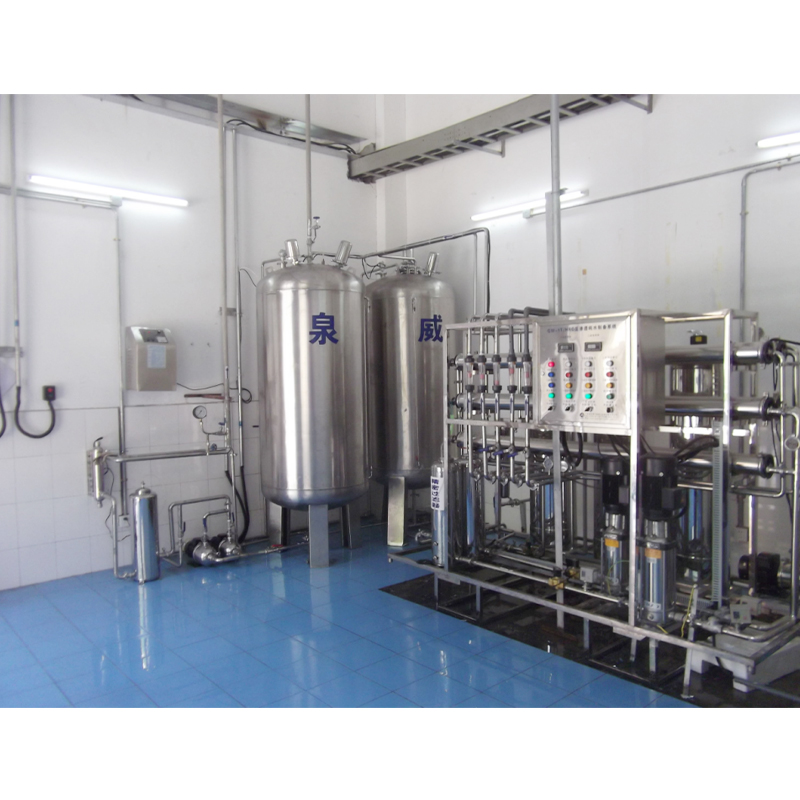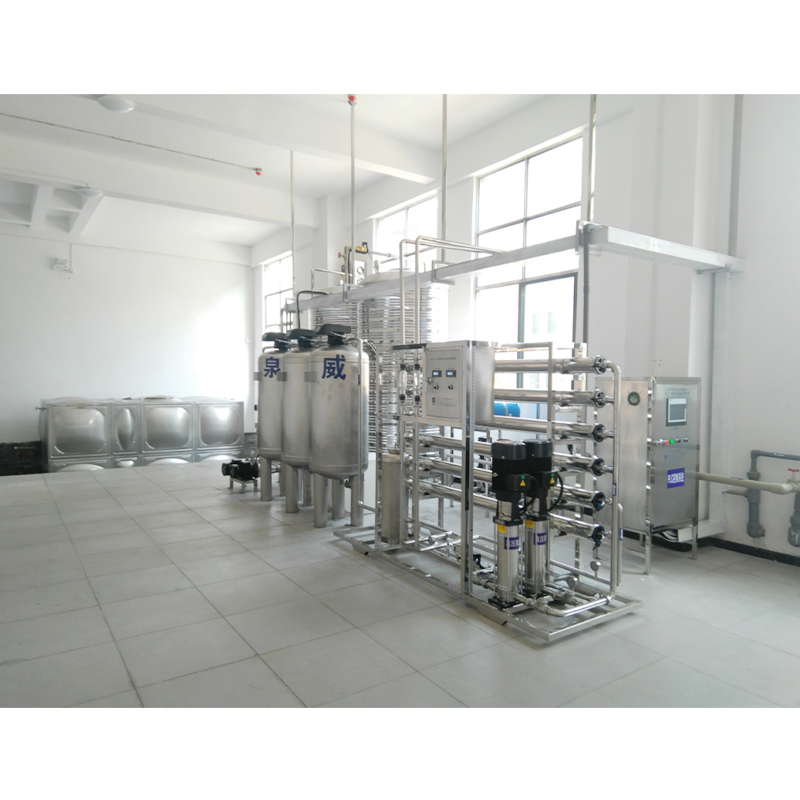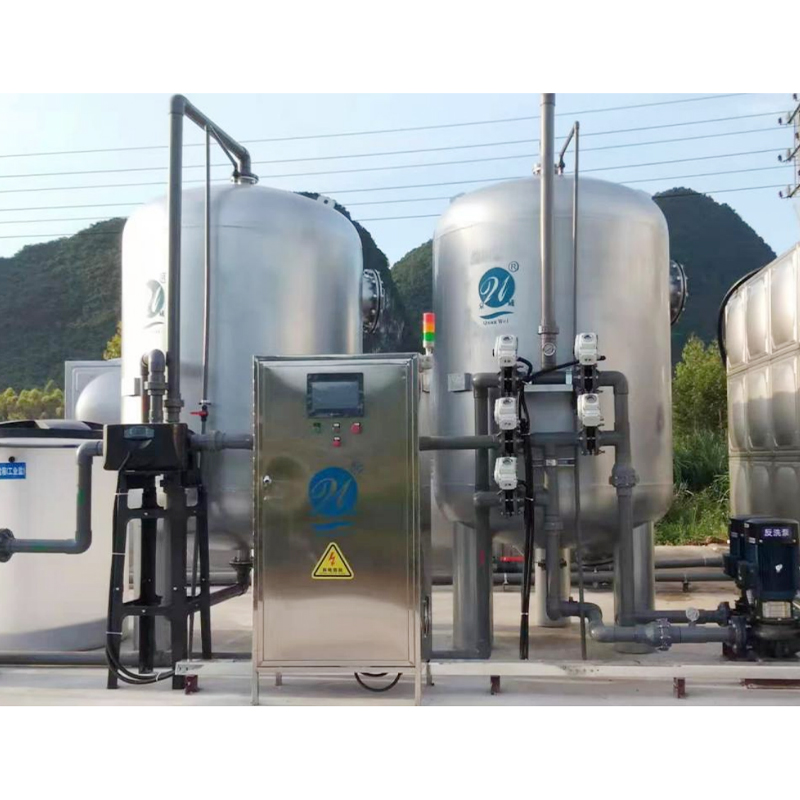What direct safety improvements does the water treated with purified water preparation device bring to residents' health?
Release Time : 2025-07-23
In modern urban life, the safety of drinking water is increasingly valued by residents and management departments. Although the water plant will conduct preliminary purification treatment, due to the aging of the water pipe network, secondary pollution, insufficient residual chlorine and other reasons, the water finally used in residents' homes may still have various potential risks. The purified water preparation device can effectively remove harmful substances in the water through a multi-stage deep purification process, providing residents with safer and healthier drinking water, thereby significantly improving the quality of life.
1. Remove heavy metals and prevent chronic poisoning
During the transportation process of tap water, heavy metals such as lead, cadmium, mercury, and arsenic may be introduced due to old pipes. Once these heavy metals enter the human body, they are difficult to be metabolized and excreted. Long-term accumulation will lead to chronic poisoning and even cause health problems in the nervous system, kidneys, liver and other aspects. Purified water preparation device is usually equipped with reverse osmosis (RO) membranes or ion exchange systems, which can efficiently remove heavy metal ions in water and ensure that the heavy metal content of the effluent is far lower than the national drinking water hygiene standards. This is of great protective significance for sensitive groups such as children, pregnant women, and the elderly.
2. Filter out microorganisms and reduce the risk of infection
Water pollution, pipe network leakage and other problems may cause bacteria, viruses, E. coli and other microorganisms to grow in the water. Once these microorganisms enter the human body, they may cause infectious diseases such as diarrhea, gastroenteritis, and hepatitis, especially for people with weak immunity. Purified water devices usually include multiple sterilization processes such as multi-media filtration, ultrafiltration (UF), ultraviolet sterilization, and ozone disinfection, which can effectively kill or remove pathogenic microorganisms in the water, ensuring that the water quality reaches the sterile or near-sterile standard, thereby greatly reducing the risk of infection and protecting the health of residents.
3. Remove organic pollutants and reduce the risk of cancer
The development of modern industry and agriculture may cause organic pollutants such as pesticide residues, drug residues, plasticizers, and volatile organic compounds (VOCs) in water sources. These substances are toxic and carcinogenic, and long-term drinking may cause damage to the human endocrine system, immune system and even DNA. Activated carbon adsorption, reverse osmosis membrane filtration, advanced oxidation and other technologies in purified water preparation device can effectively remove these organic pollutants, reduce the risk of cancer, and improve the safety level of drinking water.
4. Improve the taste and enhance the drinking experience
Traditional tap water often has odor or color due to impurities such as residual chlorine, rust, and silt, which affects the drinking experience of residents. After multiple purification processes, purified water removes these impurities that affect the taste. The water is clear and transparent, and tastes sweet, which helps to increase residents' daily drinking water intake and promote metabolism and health.
5. Ensure the drinking water safety of special groups
For special groups such as infants, pregnant women, the elderly and patients with chronic diseases, the safety of drinking water is particularly important. For example, the kidney function of infants and young children is not fully developed, and they are more sensitive to minerals and pollutants in water; while patients with chronic kidney disease need to avoid excessive intake of sodium, potassium and other ions. Purified water devices can be configured with customized processing modules according to the needs of different groups of people, such as adjusting the mineral content and removing specific ions, so as to provide special groups with safer and more personalized drinking water solutions.
6. Respond to sudden water pollution and improve emergency support capabilities
In extreme weather, natural disasters or sudden water pollution incidents, ordinary tap water may not meet safe drinking standards. The purified water preparation device has a strong anti-interference ability. Even if the raw water quality fluctuates greatly, it can stably output purified water that meets the drinking standards through a multi-stage treatment process, providing residents with reliable emergency drinking water guarantee.
As people's pursuit of healthy life continues to improve, the safety of drinking water has changed from "usable" to "easy to use". The purified water preparation device uses advanced purification technology to not only effectively remove harmful substances such as heavy metals, microorganisms, and organic pollutants, but also improve the taste and drinking experience of water quality, providing residents with higher quality drinking water. In domestic water use scenarios such as buildings and factories, installing a purified water preparation device is not only a manifestation of responsibility for the health of residents, but also an important guarantee for improving the quality of life and achieving healthy drinking water.
1. Remove heavy metals and prevent chronic poisoning
During the transportation process of tap water, heavy metals such as lead, cadmium, mercury, and arsenic may be introduced due to old pipes. Once these heavy metals enter the human body, they are difficult to be metabolized and excreted. Long-term accumulation will lead to chronic poisoning and even cause health problems in the nervous system, kidneys, liver and other aspects. Purified water preparation device is usually equipped with reverse osmosis (RO) membranes or ion exchange systems, which can efficiently remove heavy metal ions in water and ensure that the heavy metal content of the effluent is far lower than the national drinking water hygiene standards. This is of great protective significance for sensitive groups such as children, pregnant women, and the elderly.
2. Filter out microorganisms and reduce the risk of infection
Water pollution, pipe network leakage and other problems may cause bacteria, viruses, E. coli and other microorganisms to grow in the water. Once these microorganisms enter the human body, they may cause infectious diseases such as diarrhea, gastroenteritis, and hepatitis, especially for people with weak immunity. Purified water devices usually include multiple sterilization processes such as multi-media filtration, ultrafiltration (UF), ultraviolet sterilization, and ozone disinfection, which can effectively kill or remove pathogenic microorganisms in the water, ensuring that the water quality reaches the sterile or near-sterile standard, thereby greatly reducing the risk of infection and protecting the health of residents.
3. Remove organic pollutants and reduce the risk of cancer
The development of modern industry and agriculture may cause organic pollutants such as pesticide residues, drug residues, plasticizers, and volatile organic compounds (VOCs) in water sources. These substances are toxic and carcinogenic, and long-term drinking may cause damage to the human endocrine system, immune system and even DNA. Activated carbon adsorption, reverse osmosis membrane filtration, advanced oxidation and other technologies in purified water preparation device can effectively remove these organic pollutants, reduce the risk of cancer, and improve the safety level of drinking water.
4. Improve the taste and enhance the drinking experience
Traditional tap water often has odor or color due to impurities such as residual chlorine, rust, and silt, which affects the drinking experience of residents. After multiple purification processes, purified water removes these impurities that affect the taste. The water is clear and transparent, and tastes sweet, which helps to increase residents' daily drinking water intake and promote metabolism and health.
5. Ensure the drinking water safety of special groups
For special groups such as infants, pregnant women, the elderly and patients with chronic diseases, the safety of drinking water is particularly important. For example, the kidney function of infants and young children is not fully developed, and they are more sensitive to minerals and pollutants in water; while patients with chronic kidney disease need to avoid excessive intake of sodium, potassium and other ions. Purified water devices can be configured with customized processing modules according to the needs of different groups of people, such as adjusting the mineral content and removing specific ions, so as to provide special groups with safer and more personalized drinking water solutions.
6. Respond to sudden water pollution and improve emergency support capabilities
In extreme weather, natural disasters or sudden water pollution incidents, ordinary tap water may not meet safe drinking standards. The purified water preparation device has a strong anti-interference ability. Even if the raw water quality fluctuates greatly, it can stably output purified water that meets the drinking standards through a multi-stage treatment process, providing residents with reliable emergency drinking water guarantee.
As people's pursuit of healthy life continues to improve, the safety of drinking water has changed from "usable" to "easy to use". The purified water preparation device uses advanced purification technology to not only effectively remove harmful substances such as heavy metals, microorganisms, and organic pollutants, but also improve the taste and drinking experience of water quality, providing residents with higher quality drinking water. In domestic water use scenarios such as buildings and factories, installing a purified water preparation device is not only a manifestation of responsibility for the health of residents, but also an important guarantee for improving the quality of life and achieving healthy drinking water.







